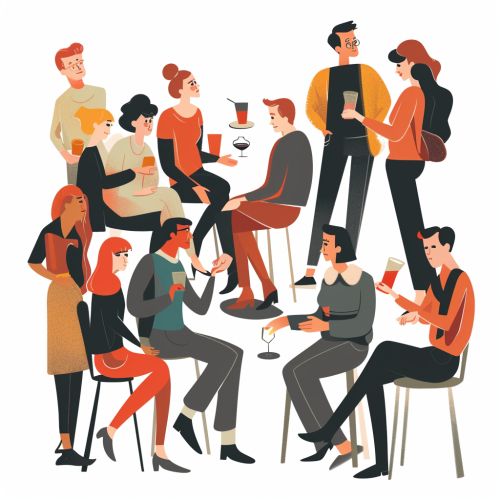Social Norms
Introduction
Social norms are shared expectations about behaviors that are considered acceptable within a group. These norms can be explicit, such as laws, or implicit, like etiquette. They shape our behaviors and interactions, influencing societal structure and individual identity.


Definition and Types
Social norms are unwritten rules about how to behave. They provide a key framework that organizes social interactions in daily life. Social norms can be categorized into two main types: descriptive norms and injunctive norms.
Descriptive norms refer to people's perceptions of what is commonly done in specific situations. They are about what most people do, without any judgment attached. For example, if most people in a community recycle, then recycling is the descriptive norm in that community.
Injunctive norms, on the other hand, involve perceptions of what is commonly approved or disapproved within a group. They are about what most people approve or disapprove of, and they carry an element of 'should' or 'ought to'. For example, if most people in a community believe that one should recycle, then recycling is an injunctive norm in that community.
Formation of Social Norms
Social norms are formed through social interactions and shared experiences. They are often established by a group consensus and are reinforced through social sanctions, such as rewards for conformity and punishments for deviance. The formation of social norms can be influenced by various factors, including cultural values, societal structures, and individual beliefs.
Role of Social Norms
Social norms play a crucial role in shaping social behavior. They provide guidelines for acceptable behavior, help to maintain social order, and contribute to social cohesion. They also influence individual behavior by creating a sense of obligation and expectation. For example, social norms can influence behaviors related to health, such as smoking or exercising, as well as behaviors related to environmental conservation, such as recycling or energy use.
Influence on Behavior
Social norms can have a powerful influence on behavior. They can encourage conformity, where individuals adjust their behaviors to align with the group norms. This can be seen in the Asch conformity experiments, where participants conformed to a group's incorrect judgment to fit in.
On the other hand, social norms can also lead to deviance, where individuals choose to violate the norms. This can be seen in the Stanford prison experiment, where participants adopted aggressive behaviors that violated societal norms.
Social Norms and Culture
Social norms are closely tied to culture. They are shaped by cultural values and beliefs, and they help to define cultural identity. Different cultures may have different social norms, reflecting their unique values, traditions, and social structures. For example, norms about personal space, eye contact, and punctuality can vary significantly across cultures.
Changing Social Norms
Social norms are not static; they can change over time as societal attitudes and values evolve. Changes in social norms can be driven by various factors, including social movements, technological advancements, and changes in legislation. For example, norms about gender roles and sexual orientation have changed significantly in many societies over the past few decades.
Conclusion
In conclusion, social norms are a fundamental aspect of social life. They shape our behaviors and interactions, influencing societal structure and individual identity. Understanding social norms can provide valuable insights into human behavior and social dynamics.
